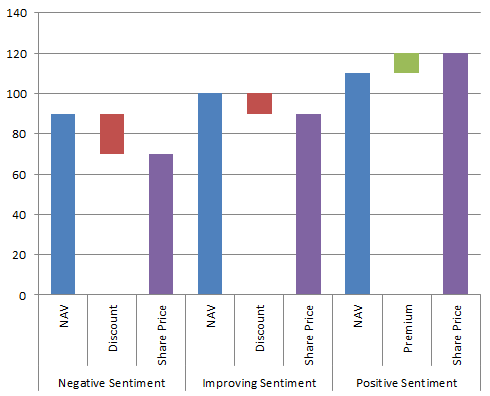
For illustration purposes only.

An investment trust is a public limited company (PLC) traded on the London Stock Exchange, so investors buy and sell from the market. It invests in other companies, seeking to generate profit for its shareholders.
Important information: please keep in mind that the value of investments can go down as well as up, so you may get back less than you invest. This information is not a personal recommendation for any particular investment. If you are unsure about the suitability of an investment you should speak to an authorised financial adviser.
Essentially, your money is pooled with contributions from many other people, and used to buy a portfolio of investments. Just like other types of investment funds.
But investment trusts are unique - after all, they've been around for over 150 years, that's a lot longer than other investments. Chosen and managed by an expert team, they give you access to a much wider and more diversified portfolio.
A must have, clear and comprehensive guide to anyone looking to invest in investment trusts. In this latest edition discover fascinating articles by more than 20 different authors, including analysts, fund managers and investment writers, plus more than 80 pages of detailed data and analysis to help you make an informed decision on your investments.
Investment trusts can borrow money in order to buy investments, in a process known as gearing. It can magnify the trust’s performance, but this happens whether it rises or falls in value, so it can boost gains or increase losses.
It’s important to remember that the interest has to be paid on the borrowed money, whether or not the trust makes a profit on the loan.
The net asset value (NAV) is the value per share of all the assets owned by the investment trust. That is, the combined value of all the assets.
They’re affected by supply and demand, as their shares are listed on the London Stock Exchange – essentially, market demand. This means that share prices may be bought and sold higher or lower than the NAV.
Changes in the difference between the NAV and the share price can magnify the gains or losses on your investment.
If you pay less than the NAV for your shares, you’re buying at a “discount”. If you pay more, you’re buying at a “premium”. However, the discount can change, meaning there is an extra level of risk in buying investment trust shares.
Discounts widen when the share price falls further behind the NAV, which can happen whether the market is rising or falling. In a rising market, shareholders may not notice a widening discount because the share price will often still be going up. However, if discounts widen when the NAV falls, it magnifies the loss.
Of course, the opposite is true. In some circumstances, the discount can narrow while the NAV falls, which reduces the overall loss.
For illustration purposes only.
Take a look at the table below for a quick overview:
| Investment trusts | OEICs | Unit trusts | |
|---|---|---|---|
| Structure | Closed ended | Open ended | Open ended |
| Available in an ISA & SIPP | |||
| Independent board of directors | |||
| Fixed number of shares | |||
| Manager's option to borrow |
Like all funds, investment trusts can rise and fall in value. However, they have more factors affecting their performance (such as supply and demand), which can mean they are more volatile and, therefore, a more risky investment.
As a result, investors need to take a range of factors into account when looking at an investment trust. In addition to the risk that the market as a whole will rise or fall, an investor needs to think about:
One of the reasons trusts tend to trade at a discount is because there is a perception that their shares can be difficult to buy or sell on occasion (in other words, they’re less liquid) as, unlike funds, a buyer must be found in order to sell your shares.
However, boards have focused more and more over the years on ways to improve liquidity in order to help close the discount to shareholders’ benefit.
In order to give our customers even more peace of mind, we’ve also ensured that all the trusts we offer have market capitalisations of around £100 million or more. This should mean there are enough shares in circulation to avoid the risk of investors not being able to sell when they want to.
If you are ready to make an investment into our Investment Trusts you have the option to invest through an adviser, third party platform or Fidelity Personal Investing. Simply follow our two-step process to get started.